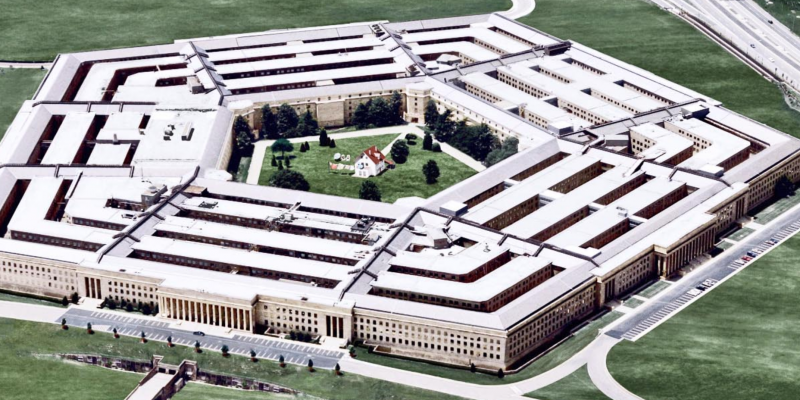A new analysis by the Chicago-based nonprofit Truth in Accounting (TIA) found that of the 21 U.S. Department of Defense (DoD) agencies audited, four stood out above the rest. The analysis includes a review of the DoD Inspector General’s report published earlier this year.
For the first time in decades, the DoD issued an Annual Agency Financial Report late last year that it described as the “first full-scope, department-wide, financial statement audit.”
Deputy Secretary of Defense Patrick Shanahan said upon its release, “We failed the audit, but we never expected to pass it.” Meaning even though it submitted failing financial reports for the $2.7 trillion agency, it still submitted them, which it hadn’t done before in decades.
Every year when the U.S. government released its financial reports, the DoD’s report held a disclaimer opinion, meaning it received a failing assessment.
While the DoD asserted it was audit-ready in 2018, it still received a disclaimer of opinion on the department-wide financial statements, as did most of its 21 agencies’ financial statements. That means they were failing grades.
In 1990, the Chief Financial Officers Act directed all federal agencies to prepare and present audited financial statements, allowing an exception for agencies if they claimed their statements were not auditable. The DoD did so for 20 years, the Chicago-based non-profit Truth in Accounting (TIA) says. Iowa Republican Sen. Charles Grassley, chairman of the Senate Finance Committee, says it’s been closer to 28 years.
The DoD audit published last year came after Ernst & Young and other private firms hired to audit the Pentagon said they couldn’t do it. The DoD’s numerous bookkeeping deficiencies, irregularities, and errors made conducting a reliable audit “impossible,” they said.
The DoD, which receives 54 cents out of every discretionary spending dollar in federal appropriations, had failed to audit itself for decades.
In 2017, Grassley argued the DoD’s long-standing failure to do so reflected “twenty-six years of hard-core foot-dragging” where “internal resistance to auditing the books runs deep.” Grassley has requested audits of DoD spending nearly every year.
This year, he argued, the DoD’s “exorbitant spending continues to blow a hole in the pockets of American taxpayers and put our military readiness at risk,” after reading the IG’s report.
But Bill Bergman, director of research at TIA, says, “the Pentagon took a good first step toward deserving trust with the public purse.” He told The Center Square, however, “There’s still a long way to go.”
Out of 21 agencies, TIA found four that fared well, with many still showing poor financial recordkeeping.
The four DoD agencies that did well are the Military Retirement Fund (MRF), Defense Finance and Accounting Service (DFAS), Defense Contract Audit Agency (DCAA), and U.S. Army Corps of Engineers.
Four of the five lowest-scoring (and largest) entities are the U.S. Army, Navy, Air Force, and Marines. The lowest scoring entity was the Defense Logistics Agency – WCF.
“Understanding which DoD entities are and are not in a state of good audit readiness can help provide a path toward truthful and transparent financial practices,” the TIA report states.
The DCAA, the DoD department-wide auditor, led the overall “first full DoD audit” last year. It was spearheaded by the agency’s CFO, David Norquist. The DCAA “plays a key role in securing trustworthy procurement and purchasing practices,” TIA states.
The MRF, a defined benefit plan with annual retirement payments totaling $40 billion, serves roughly 1.5 million military retirees. Its auditor did not identify a single material reporting weakness or any instance of noncompliance with laws and regulations.
However, its debt ratio was cause for concern, TIA states. More than $800 billion in total assets in 2018 was countered by $1.6 trillion in reported liabilities, resulting in a negative net position of more than $800 billion worth of debt.
The U.S. Army Corps of Engineers Civil Works Program also fared well with two of its leaders standing out, TIA notes. The agency was one of a few DOD entities to assert it was ready for audit in the years before the 2018 audit. It also earned an unmodified (clean) audit opinion for 11 years in a row.
The DFAS, which also fared well, processed more than 100 million pay transactions, 6 million travel payments, and 13 million commercial invoices last year – totaling more than $500 billion in disbursements.
TIA scoring was based on seven criteria including the auditor’s opinion, the ease of finding the entity’s annual financial report on its website, the number of Notices of Findings and Recommendations (NFRs), the number of reissued NFRs, the number of identified material weaknesses, the number of identified instances of noncompliance with laws and regulations, and how long it took between the fiscal year end and when the audit report was delivered.
This article was first published by The Center Square.
Advertisement
Advertisement

